
 |
|
|
#1 |
|
Member
Join Date: Jun 2007
Location: Detroit (New Mayapan)
Posts: 96
|
Any comments on the provenance and age of this would be appreciated. I'm going to guess European, 1880-1910, only because I can't think of a time when this may have been more common.
Overall length is 26" 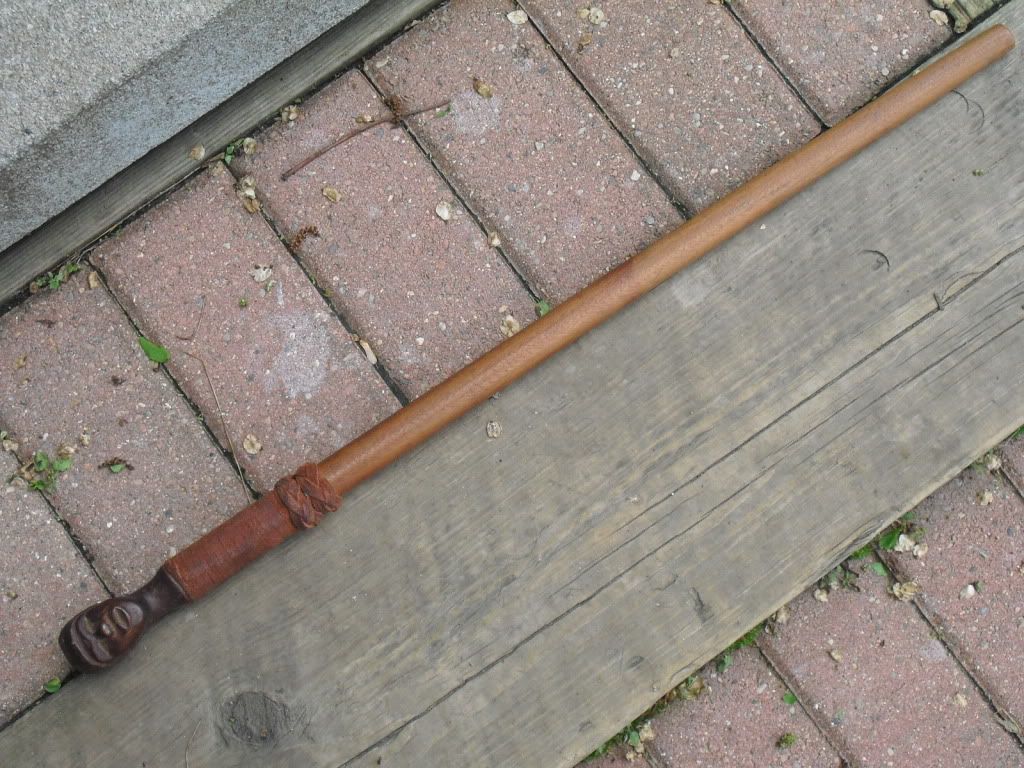 Blade is 18"  Two views of the cruciform blade. The point is very sharp: 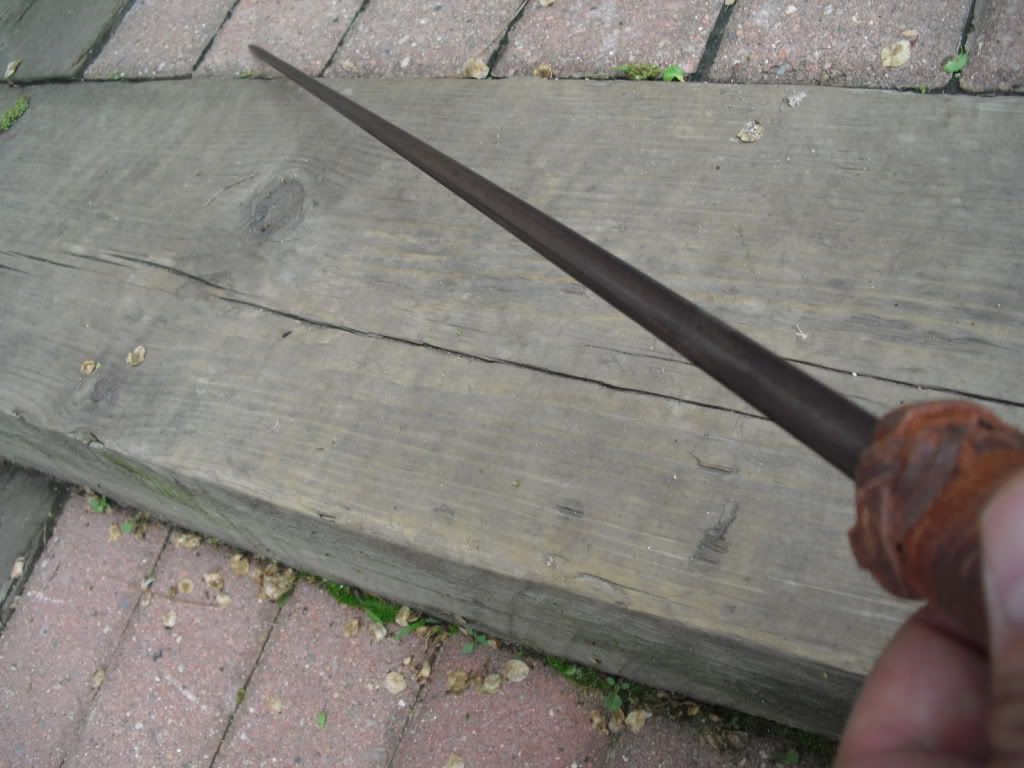 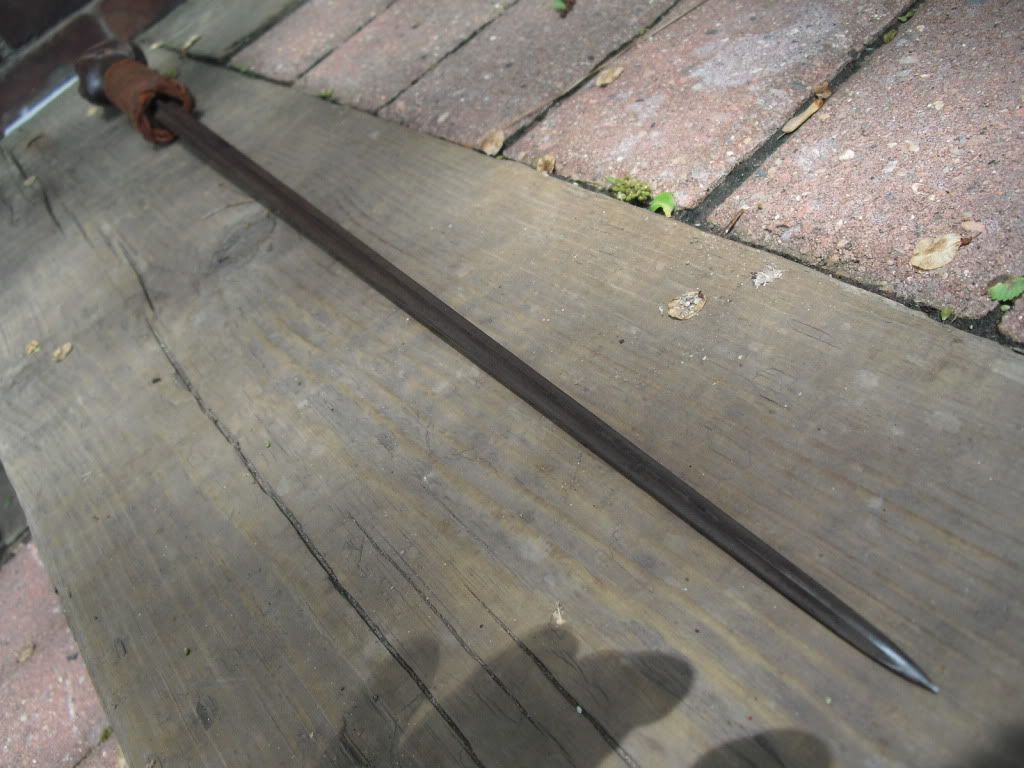 Close up of the head. I'm unsure what kind of wood it is, but my fingernail doesn't leave a mark in it: 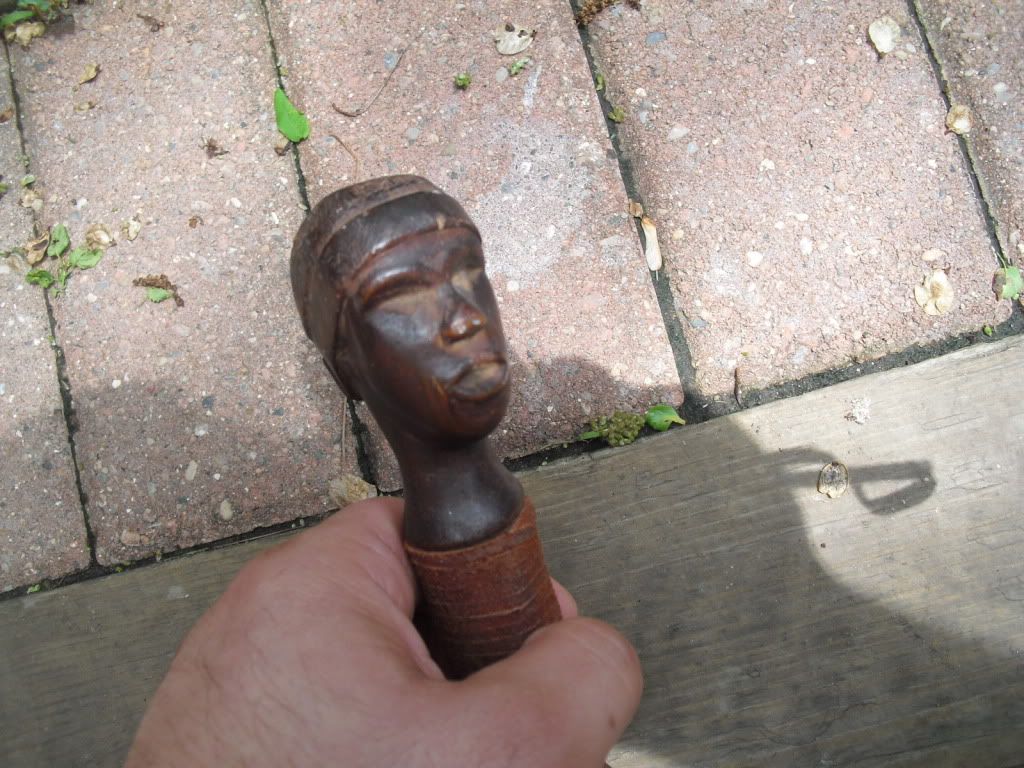 The leather cord and Turk's head knots appear to be later additions:  Another view of the blade. It has a nice patina:  I'm certain the wood of the shaft is mahogany, having worked with it many times before: 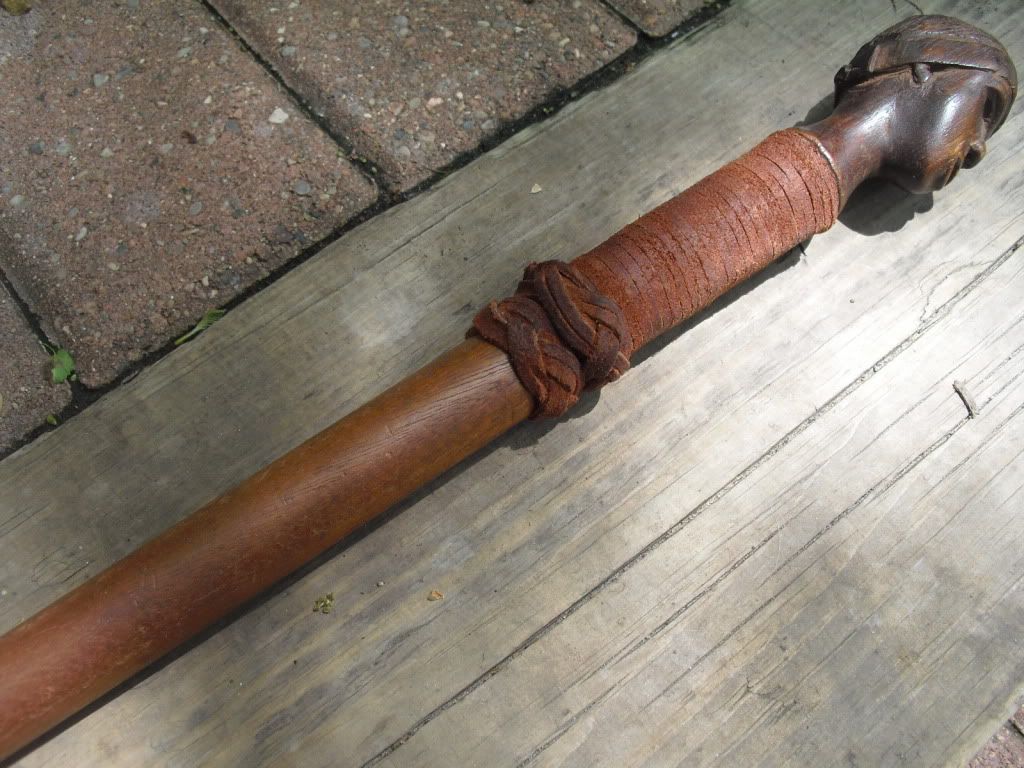 Thank you in advance. |
|
|

|
|
|
#2 |
|
Member
Join Date: Jan 2006
Location: Kent
Posts: 2,658
|
Hi Queequeg,
I would hazard a guess and say that this is either African or African colonial. Sword sticks are still available in Africa today for self protection whilst in the bush. Finding the 'source' of the blade would be a great help ....any markings ? Regards David |
|
|

|
|
|
#3 |
|
Member
Join Date: Jun 2007
Location: Detroit (New Mayapan)
Posts: 96
|
David,
No markings, unfortunately. 
|
|
|

|
|
|
#4 |
|
Member
Join Date: Oct 2007
Posts: 2,818
|
All a very modern put together in my opinion.
It would be more a swagger stick at the length. |
|
|

|
|
|
#5 |
|
Member
Join Date: Dec 2004
Posts: 1,247
|
That blade looks like a modified fencing epee, which would make it western and probably modern-ish. Not sure where the head came from.
Best, F |
|
|

|
|
|
#6 |
|
Member
Join Date: Jun 2007
Location: Detroit (New Mayapan)
Posts: 96
|
Anyone up for estimating the age of this?
|
|
|

|
|
|
#7 |
|
Member
Join Date: Dec 2004
Posts: 1,247
|
I think it's 30-50 years old, if that helps.
F |
|
|

|
|
|
#8 | |
|
Member
Join Date: Oct 2007
Posts: 2,818
|
Quote:
Gav |
|
|
|

|
|
|
#9 |
|
Member
Join Date: Dec 2004
Posts: 1,247
|
Okay, Gav, 20-50 years. I can go with that. I think it's had time for the leather to get worn and the wood to get a bit of a patina, at least.
F |
|
|

|
|
|
#10 |
|
Member
Join Date: Oct 2007
Posts: 2,818
|
The blade appears to be a French M1886 Epee Bayonet, cruciform blade with a slightly re-profiled tip. I have seen these in various canes of various ages from various regions.
Catherine Dike in Cane Curiosa show a couple of examples, one with the edges filed in decoration, figure 29/58 and and another in figure 29/67. Both appear to be the size and taper of these bayonets. Gav |
|
|

|
|
|
#11 |
|
Member
Join Date: Aug 2005
Location: Australia
Posts: 372
|
I dont think the tip is right for an epee, I suspect Gav is on the right track
drd |
|
|

|
|
|
#12 |
|
Member
Join Date: Jan 2006
Location: Kent
Posts: 2,658
|
I too think Gav is on the right track, a French bayonet that continued to be used in WW1 and later would certainly have been used in North Africa. Many European bayonets ended up reprofiled and mounted locally.
No great age to the fittings but the blade is likely much older and remounted....as I said before these are still carried in some parts of Africa. This could have been carried as a short sword, thrust through a belt. Regards David |
|
|

|
|
|
#13 |
|
Member
Join Date: Dec 2004
Posts: 1,247
|
I'm going to have to disagree, speaking as the former kid who actually ground down a broken epee blade. To me, it's chevron-shaped in cross section, but I agree that the pictures are less than informative
In any case, Queequeg will have to answer what the cross-section is, especially near the base. Here's a modern epee (image source) for comparison. Unfortunately it doesn't show the critical part where this blade was sharpened down. Best, F Last edited by fearn; 27th May 2011 at 06:33 PM. |
|
|

|
|
|
#14 | |
|
Member
Join Date: Oct 2007
Posts: 2,818
|
Quote:
Gav |
|
|
|

|
 |
| Thread Tools | Search this Thread |
| Display Modes | |
|
|